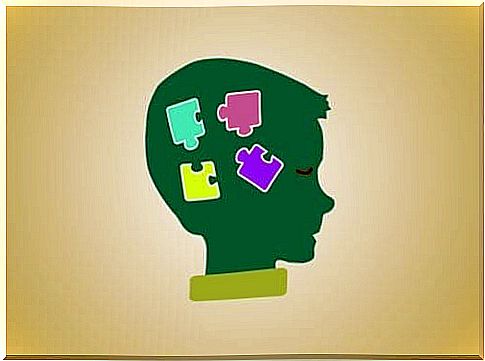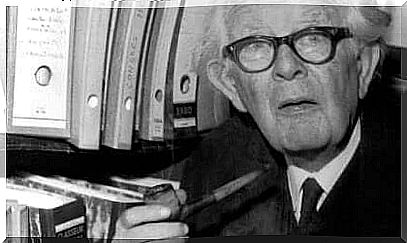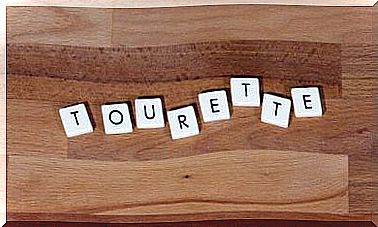Phases Of Cognitive Development According To Piaget

Piaget’s stages of cognitive development represent a whole theoretical framework within developmental psychology. Piaget studied infant development based on a very limited sample, three children: sons Laurent, Lucienne and Jacqueline.
Cognitive development followed from birth through adolescence. The conclusions he reached were later complemented by studies conducted on thousands of children. Piaget devoted himself to the observation of his children together with his wife Valentine.
They combined the method of natural observation with the experimental method. The sample used by the psychologist, however, was considered an important limitation of his method. It is understood that a sample of only three subjects is not representative enough to be able to draw conclusions that can be generalized to all human development.
This led to the need to replicate the results with larger and more representative samples. The results of these studies showed that Piaget’s conclusions were very accurate.
Starting from his observations, he elaborated his theory of the stages of cognitive development and identified three stages. Three important essays on the subject should be highlighted: The birth of the child’s intelligence, The construction of reality in the child and The formation of the symbol in the child.

Fundamental principles of the stages of cognitive development
Piaget’s description of human development revolves around two principles:
- Cognitive functions : innate, common and invariable biological processes throughout the life cycle. Their purpose is the construction of internal cognitive structures. The two main functions, described by Piaget are organization and adaptation. The organization allows schemes to acquire greater complexity, to integrate information.
Adaptation implies an interchange of the organism with its environment through the modification of both, in order to reach a balance for survival. This in turn involves two processes: assimilation and accommodation. In assimilation, the child filters new experiences through pre-existing patterns and integrates them. In accommodation, however, the child is forced to modify their mental structures to make room for new knowledge.
- Mental structures: they vary with the development of the child. An example is the concept of a schema. Patterns are organized patterns of behavior that can be repeated in similar situations. It is a continuous process of organization and reorganization of the individual structures. The schemes described by Piaget are three: action, symbolic and operational.
Stages of cognitive development
First phase or sensorimotor stage
It occurs in the first two years. It is characterized by the appearance of sensorimotor skills as a way to know the world; it is limited to physical interaction with objects and people. Schemes are action.
In this cognitive phase the two main achievements are: intentionality and permanence of the object. This stage can be divided into 6 sub-stages.
-
Sub-stage 1: Reflex exercise prevails .
- Sub-stage 2: The patterns and the primary circular reaction appear . The child performs involuntary actions directed at his own body. Passive expectation appears, i.e. the child follows the moving object with his gaze.
- Sub-stage 3: Secondary circular reactions appear , accidental but outward-directed actions. The child can repeat movements considered interesting. There are also deferred circular actions: if the child is interrupted during an activity, he is able to resume it later.
- Sub-stage 4: Development of intentional behavior. The child is able to imagine the goal to be achieved and to plan the action. It can therefore distinguish means from ends and coordinate schemes. At this stage, the A-non-B error appears. That is, if we hide an object under a pillow, the child will go and look for it underneath. But if you add a second pillow, and change the position of the object under his eyes, the child will continue to search for it under the first pillow.
- Sub-stage 5: Tertiary circular reactions appear. The child experiments for pure pleasure, to explore new possibilities through the repetition of the action. In this phase, transposition errors can be noted: the child is unable to search for the object when it has been hidden without him seeing it.
- Sub-stage 6: the child adapts to the world through direct behavior. The novelty of sub-stage 6 is the appearance of the symbolic function. This involves acquiring the ability to use mental representations or symbols. The permanence of the object is total. The child can understand that the object continues to exist even when it is out of his field of vision.

Preoperative stage and specific operative stage
In turn, it is divided into two sub-phases:
- Under preoperative phase : It goes from 2 to 6 years and is marked by the appearance of the symbolic function which takes the form of activities such as imitation, drawing, play and language. The child is immersed in self-centeredness, physical, logical and social. It commits a number of prejudices such as the inability to classify, retain or specify. It does not have the nation of irreversibility. As for the notion of causality, the child makes mistakes such as finalism (thinks that everything is the cause of something), artificialism (believes that everything that exists has been built by humans) or animism (gives birth to objects).
- Under the operative phase. It takes place from about 7 to 11 years old. It is characterized by the ability to mentally operate with knowledge, which manifests itself in the resolution of problems of conservation, serialization and classification.
Formal operative stage
From the age of 12 to adulthood , the ability to think abstractly and logically is acquired through the formulation of hypotheses, contemplating not only the real but also the possible.
At this stage, more importance is given to friendship. Identity also begins to form. In this process the adolescent will have to go through some crises to reach a definitive identity position.









